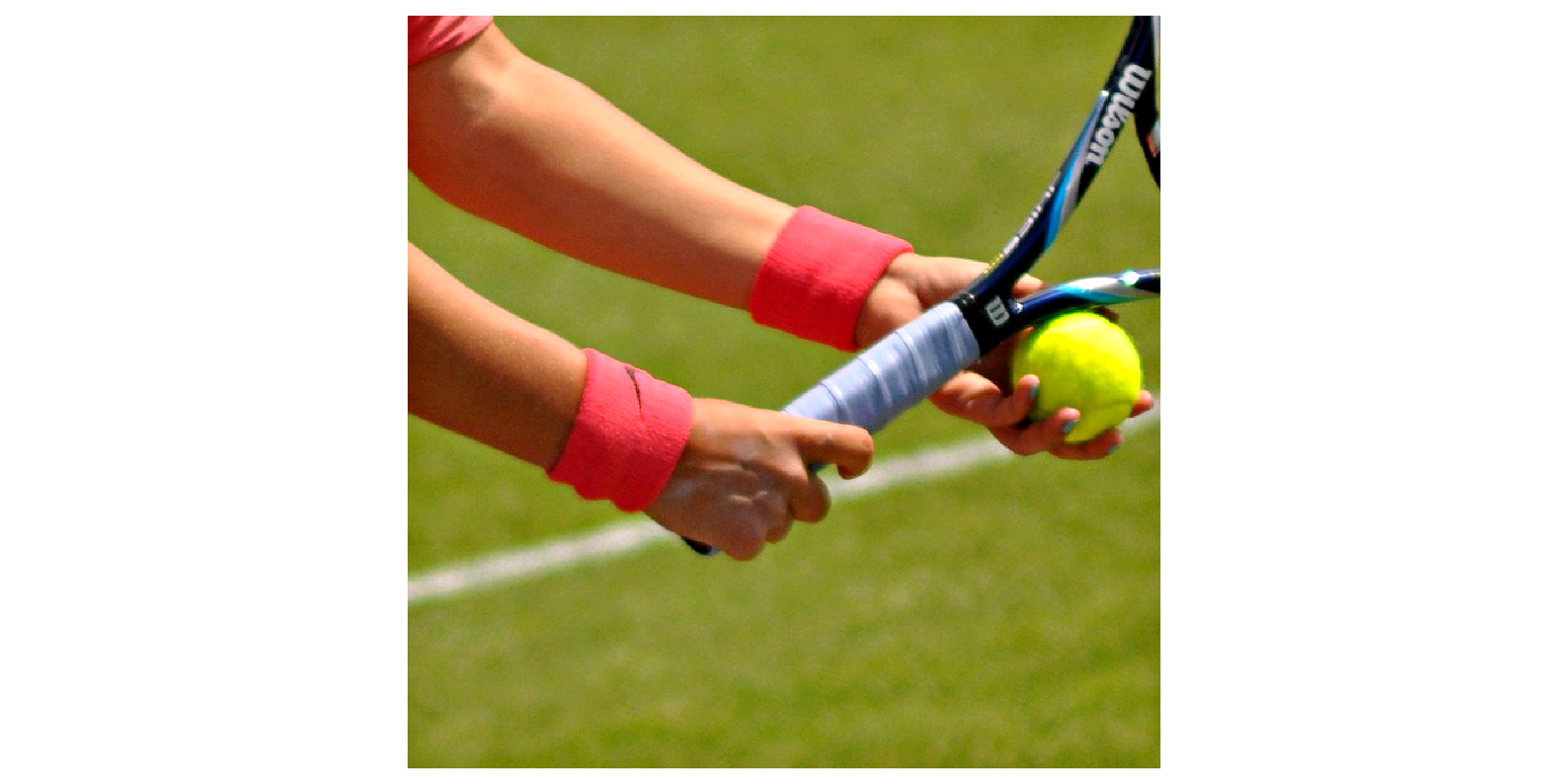
SLICE BACKHAND
Grip

Collapsible content
Continental Grip
- Used for Slice Backhand
Backswing

Collapsible content
Backswing Details...
1. Head slightly tilted with shoulder and arm up during preparation. Chin should be above shoulder.
2. Strings are pointing up during backswing as edge is near or above back shoulder. The height of the racket on the backswing may be determined the height of the ball.
3. Left hand holds the throat of the racket for stability.
4. Right elbow is up and slightly bent.
5. Left elbow is pointing downward.
6. Front shoulder begins to lean into stroke.
7. Chest and body should be sideways.
8. Arm and racket are in an "L" position as fingers are slightly spread on the grip, creating a space between the index and middle finger.
9. Weight begins to transfer onto front leg.
10. Racket swings into the ball leading with the butt cap.
11. Left hand releases throat as racket begins to swing forward.
12. Strings remain facing up through the backswing, as racket swings high to low.
13. Shoulder controls the shape of the swing throughout stroke.
14. Left hand begins to reach backward, keeping back shoulder behind the body.
15. Racket head stays up, above the hand through contact.
16. Butt cap continues swinging high to low toward the ball.
Contact Point

Collapsible content
Contact Point Details...
17. Leading with the shoulder, weight should transfer into the ball.
18. Hips are low, keeping the body in a balanced, athletic stance. The height of the stance may be determined by the height of the ball.
19. The "L" position remains throughout the contact point.
20. Shoulder swings loosely and freely through the contact point.
21. Head stays still and sideways through the contact point.
22. At contact, strings are slightly open, allowing the racket to hit the back of the ball, high to low.
23. Left hand continues moving backward, always staying behind the body.
24. Immediately after hitting the ball, the racket continues moving downward, past the contact point.
25. Left shoulder should remain sideways, behind body, never coming opening up.
26. Left hand continues reaching backward, ensuring the back shoulder stays sideways.
27. Racket should hit its lowest point of the swing just before rising into the follow through.
28. Weight should have fully moved forward through the contact point and onto the front foot.
29. Back heel should be lifted with toes touching the ground.
Follow Through

Collapsible content
Follow Through Details...
30. Arm begins to straighten out through the follow through.
31. Head remains still and sideways throughout the follow through.
32. Back shoulder remains behind, beginning to squeeze the shoulder blades together.
33. Back hip remains behind, keeping the body sideways.
34. Racket swings across body, parallel to the baseline, throughout the follow through.
35. Shoulder swings loosely and freely through the follow through.
36. Chest may open slightly, as long as the back shoulder stays behind.
37. The "L" position remains through out the follow through.
38. Left hand remains behind, reaching backward.
39. Butt cap should be pointing up at the end of the stroke.
40. Shoulder blades should be squeezed together.
41. Hips stay low, keeping the body in a balanced, athletic stance on the follow through.

